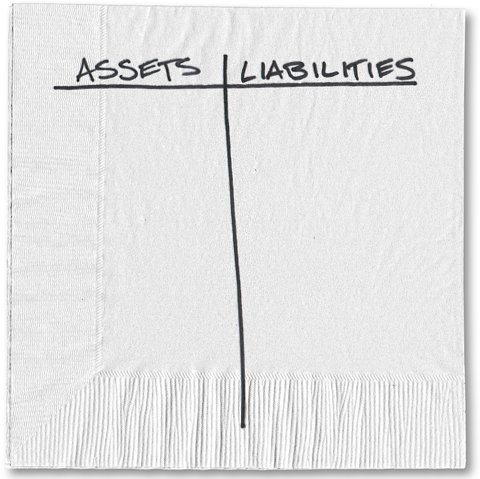 Carl Richards
Carl Richards
Carl Richards is a certified financial planner in Park City, Utah, and is the director of investor education at BAM Advisor Services. His book, “The Behavior Gap,” was published this year. His sketches are archived on the Bucks blog.
The world is a crazy place. We hear reports that say the economy is getting better. Next month, we hear that things don’t look so good. It feels like a tug-of-war, and we’re caught in the middle. Looking around, you may feel like the only thing you have any hope of controlling is your financial situation. So you want to make some changes and put a framework around your financial future.
But there’s so much information! Credit card statements, mortgage payments, insurance renewals, student loan bills and every other piece of financial data about your life can be overwhelming. It’s incredibly easy to throw up your hands and say, “I don’t know where to start.”
The best place to start is with your current reality. Seems obvious, right? But if it’s so obvious, then why haven’t we done it?
- It can be painful. The reason you’re looking to change things is because something isn’t working. That something may be incredibly personal, like how you talk about money with your spouse. So we avoid our current reality and tell ourselves things will get better tomorrow.
- There are a million other things to do. We’re all busy. Thinking about what’s right and wrong with your current reality probably doesn’t make anyone’s Top Ten list.
But if you find yourself in a situation where you’re ready to make a change, the best place to start is at the beginning by creating a personal balance sheet. Your goal is to discover where you stand financially right now.
You don’t need a fancy spreadsheet or even a computer for this exercise. Just grab a blank piece of paper and a pen. Then draw a line down the middle.
On the left side, list all your assets in detail. Bank accounts, equity in your home (that is not meant to be a joke), investment portfolio. For every asset, list it and its value.
On the right side, list all your liabilities. Credit card debt, mortgage, school loans. Again, get specific and list the actual amounts of each liability.
If you don’t know, call your bank, credit card company or your adviser. In this exercise, guessing isn’t allowed, so ask the questions and get the real numbers on paper.
Then, add up all your assets and subtract all your liabilities. You now have your net worth.
What does it look like? If you’re not happy with the number you see, you have two choices that will probably involve some hard work:
- Increase your assets
- Decrease your liabilities
If you’re wondering why I suggest starting with something so simple, it’s because I keep crossing paths with people who don’t know how their assets compare to their liabilities. And the reality is that if you don’t know where you stand today, then how will you ever figure out where you want to be tomorrow?
So the next time you think you don’t know where to start, ask the question, “What does my current reality look like?” Once you know where you stand, then you can make an honest assessment of your options and what comes next.
Article source: http://bucks.blogs.nytimes.com/2012/10/01/a-simple-place-to-start-your-net-worth/?partner=rss&emc=rss
Speak Your Mind
You must be logged in to post a comment.